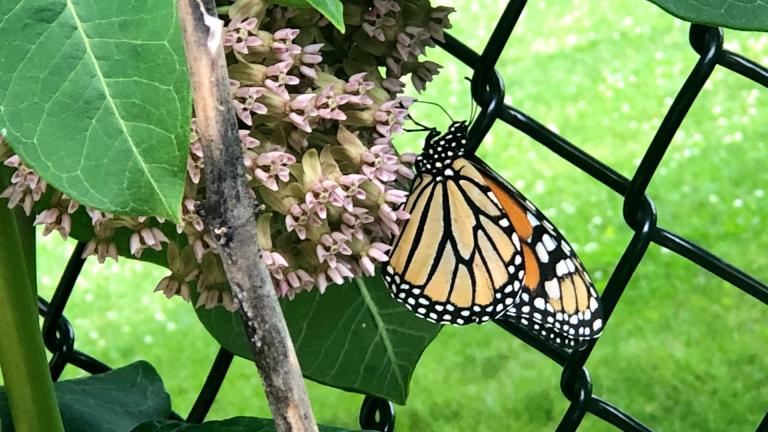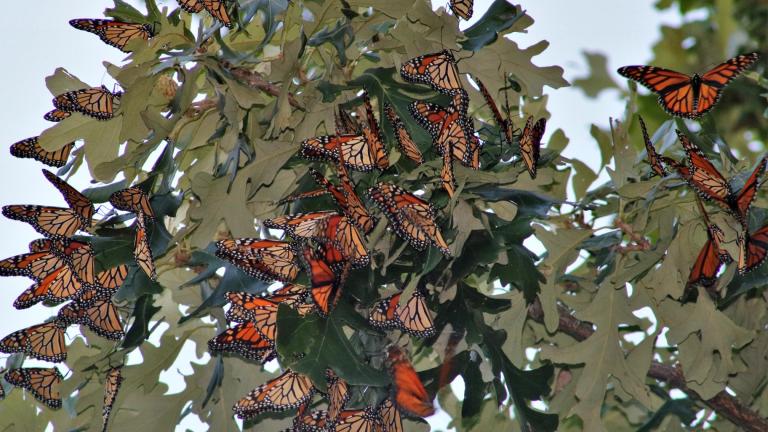Monarch butterfly populations in North America have dropped about 90 percent over the last 10 years. Conservation expert Scott Hoffman Black of The Xerces Society stops by to share simple ways that we can promote the iconic creature’s habitat in our own backyards.
 Every fall, North American monarch butterflies travel between 1,200 and 2,800 miles from their summer breeding grounds to overwintering locations in central Mexico.
Every fall, North American monarch butterflies travel between 1,200 and 2,800 miles from their summer breeding grounds to overwintering locations in central Mexico.
In January, the World Wildlife Fund in Mexico reported that the size of the 2013-2014 overwintering population was the smallest since monitoring began in 1994, occupying .67 hectares (1.65 acres). The 2013-2014 overwintering population was approximately half the size of the previous year’s population (1.19 hectares), which had previously been the smallest population on record.
Over the past two decades, the average area occupied by monarchs was 6.39 hectares, and researchers estimate that 10-15 million monarchs exist per hectare.
Climate change, deteriorating forests in Mexico due to illegal logging, and a decrease in monarch’s primary food source (milkweed plants) have led to the decline in the monarch butterfly population.
Monarch caterpillars only eat milkweed plants, and monarch butterflies need milkweed to lay their eggs. While there are many native milkweed species throughout the country, the increased use of herbicides for agriculture has killed many of the plants.
To help bring back the monarch population, plant milkweeds and nectar plants in gardens and landscaping.








